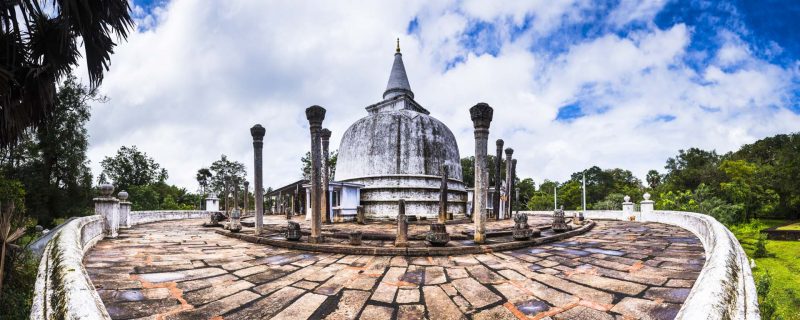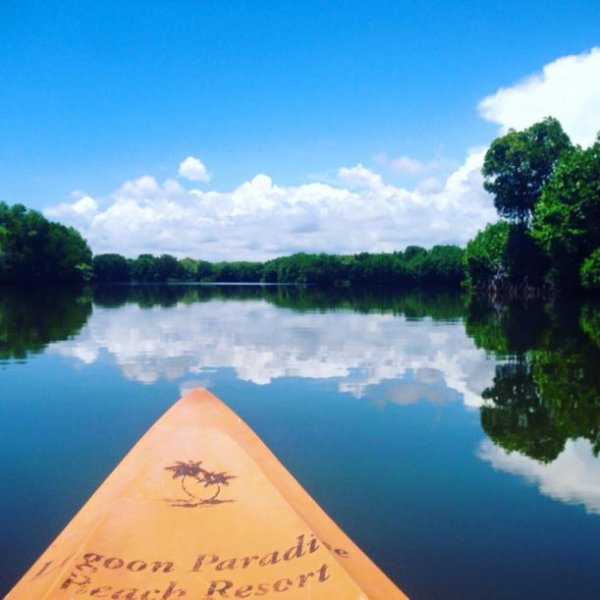
This story is brought to you by CEAT – Never Stop Moving
![]()
Koneswaran Temple is in many ways, the cultural capital of the East Coast. Perched atop Swami Rock, and overlooking the crystalline deep waters of the Trinco harbour, the classical-medieval structure and its surrounding locale are layered in history.
The temple itself is chock-full of unique and noteworthy features, some geographical, some architectural, but all with a story behind them.
Ravana’s Cleft
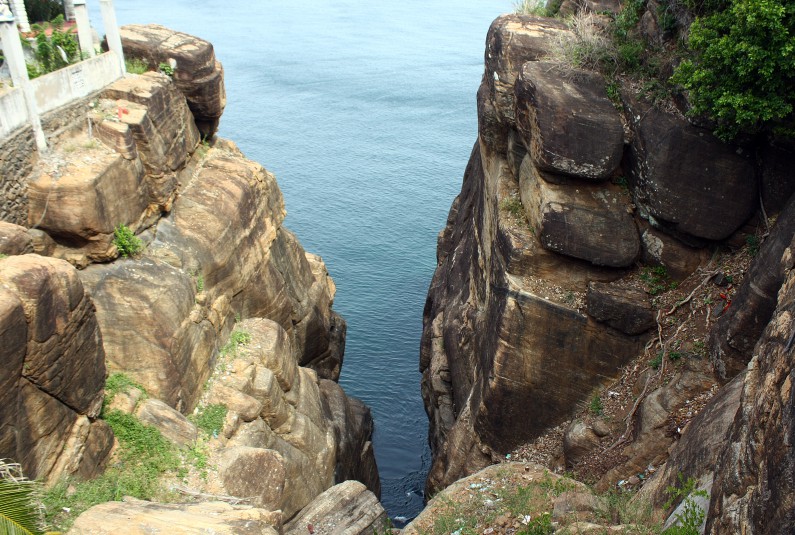
Ravana’s Cleft on Swami Rock is said to have been cleaved in two by King Ravana’s sword. Image courtesy: Wikimedia Commons
According to the Ramayana—a Sanskrit epic poem documenting the exploits of Prince Rama, one of Koneswaran Temple’s most iconic geographic features—a huge cleft along the cliff face of Swami rock—is the result of King Ravana, an ancient and mythical ruler of Sri Lanka.
The story goes that Ravana and his mother used to worship at a shrine of Shiva at Koneswaran Temple. However, when Ravana’s mother fell ill and was unable to visit the temple, the mighty king attempted to lift the temple and take it to her.
While doing so, Ravana’s sword was said to be struck down by Shiva, spinning down into the sea and cleaving Swami rock in half along the way. The resulting cleft is known as Ravana vettu to the local Tamil-speaking population.
Fort Fredrick
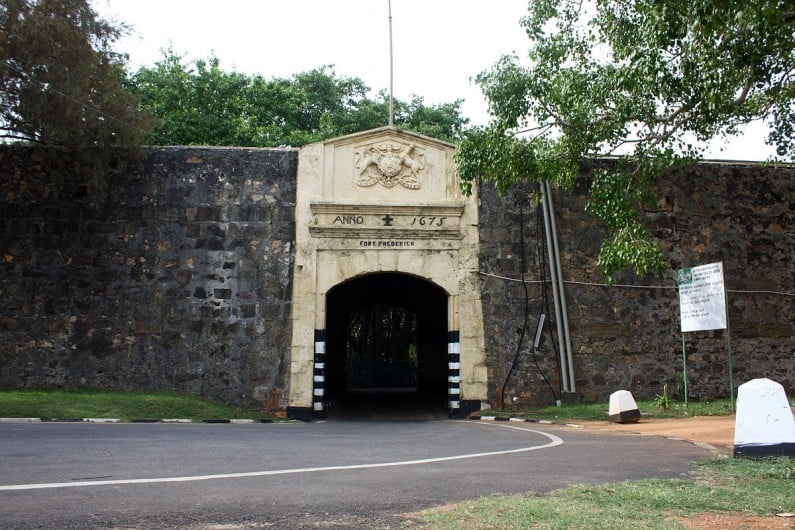
Built from the rubble of Koneswaran temple, and passed from the Portuguese to the Dutch, Fort Fredrick is now occupied by the Gajaba Regiment of the Sri Lankan Army. Image courtesy: Wikimedia Commons
While not technically a part of the Koneswaran Temple complex, this colonial fort is still very much part of the temple’s legacy. Currently occupied by the Sri Lankan military, Koneswaran Temple itself cannot be accessed without passing through the Dutch and Portuguese architecture of this fort.
In the early 1600s, Portuguese colonist Constantino de Sá de Noronha, operating under King Phillip III, destroyed Koneswaran Temple and used its ruins to build the what was then known as the Fort of Triquilimale. Once Trincomalee passed hands from the Portuguese to the Dutch, the fort was largely dismantled and rebuilt to suit Dutch interests. It was then renamed to Fort Fredrick.
Thirukoneswaram Ther Thiruvilah Festival
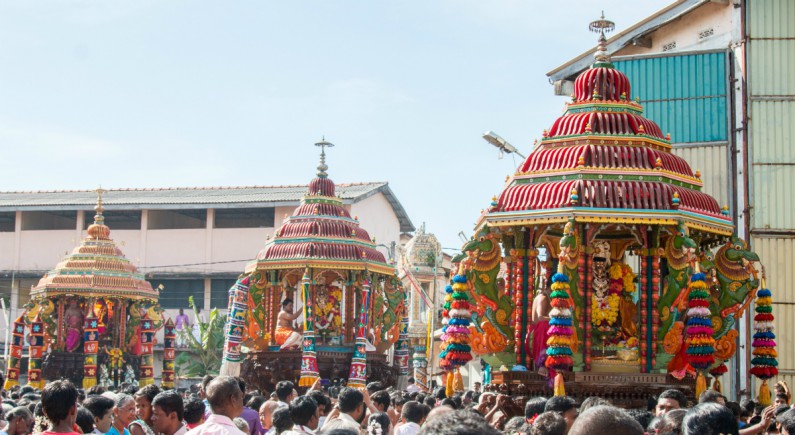
Koneswaran temple bursts with colour during the annual Thirukoneswaram Ther Thiruvilah Festival. Image courtesy: omlanka.net
Considered one of the oldest practices of worship in the island, the Thirukoneswaram Ther Thiruvilah festival came to a halt around 1622 when devotees attending the festival were massacred by Portuguese colonists. The tradition wasn’t revived until 379 years later, in 2003. Taking place over 22 days, the annual chariot festival now draws Hindus from all over the island to the ancient premises of the Koneswaran Temple.
The hoisting of the Nandi flag marks the start of the festival and, over the next three weeks, several rituals will take place in and around sacred sites of the temple. The water-cutting ritual, called the Theertham, takes place at the Papanasachunai Holy Well on Swami Rock. Here, figures of deities and other holy artifacts are bathed, and devotees are sprayed with water from the well.
Koneswaran Endures
Today, the Koneswaram Temple is not just a symbol of legend and history, but also one of survival, having endured looting and destruction during colonial times. That it has been revived as a place of worship, and as an intriguing destination for the reverent traveller, is a reminder of how well some places can stand the test of time.

